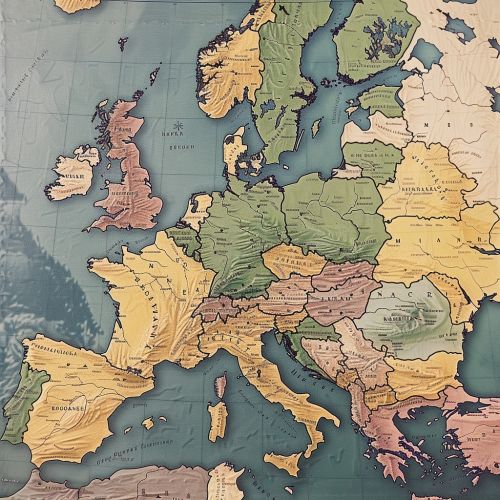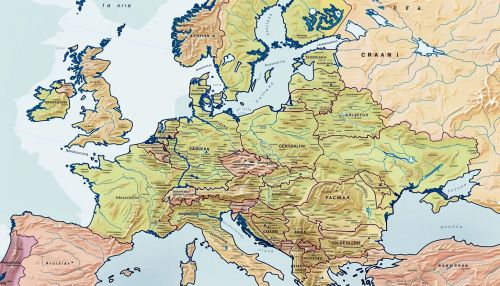German language
Overview
The German language is a West Germanic language that is mainly spoken in Central Europe. It is the most widely spoken and official or co-official language in Germany, Austria, Switzerland, South Tyrol in Italy, the German-speaking Community of Belgium, and Liechtenstein. It is also one of the three official languages of Luxembourg and a co-official language in the Opole Voivodeship in Poland. The languages which are most similar to German are the other members of the West Germanic language branch: Afrikaans, Dutch, English, the Frisian languages, Low German/Low Saxon, Luxembourgish, and Yiddish.


History
The history of the German language begins with the High German consonant shift during the migration period, separating Old High German dialects from Old Saxon. The earliest testimonies of Old High German are from scattered Elder Futhark inscriptions, especially in Alemannic, from the 6th century AD; the earliest glosses (Abrogans) date to the 8th; and the oldest coherent texts (the Hildebrandslied, the Muspilli and the Merseburg Incantations) to the 9th century. Middle High German begins in the 12th century; the earliest texts date from the 14th century.
Phonology
The phonology of the German language is the study of the sounds used in the German language. The German language has a large number of vowel and consonant sounds, and it also has a wide range of diphthongs. The language also uses a number of special characters, including ä, ö, ü, and ß. The German language also has a number of unique phonological features, such as the use of final-obstruent devoicing, a feature that causes voiced obstruents to become voiceless at the end of a word or a syllable.
Grammar
German grammar is the set of structural rules of the German language, which in many respects is quite similar to that of the other Germanic languages. Although some features of German grammar, such as the formation of some of the verb forms, resemble those of English, German grammar differs from that of English in that it has, among other things, cases and gender in nouns and a strict verb-second word order in main clauses.
Vocabulary
The German language has a rich and varied vocabulary, with a significant proportion of its words derived from Latin and Greek. It also has a number of loanwords from other languages, including English, French, and Italian. The German language also has a number of unique words and phrases that do not have direct equivalents in other languages, such as "Schadenfreude", which refers to the pleasure derived from the misfortune of others, and "Zeitgeist", which refers to the spirit or mood of a particular period of history.
Writing system
The German language uses the Latin script. In addition to the 26 standard letters, German has three vowels with Umlaut, namely ä, ö, and ü, as well as the Eszett or scharfes S (sharp s) which is written "ß".
Dialects
There are many regional dialects in the German language, each with its own unique features and characteristics. These dialects can be broadly grouped into Low German, Central German, and Upper German dialects. Some of these dialects, such as Bavarian, Swabian, and Cologne dialect, are so distinct that they are sometimes considered separate languages in their own right.
Influence and use in the world
German is one of the world's major languages and is the most widely spoken first language in the European Union. Globally, it is the third most taught foreign language, after English and French, and is used as a lingua franca in many parts of the world. German is also a key language in academia, with many important scientific and philosophical works originally written in German.
